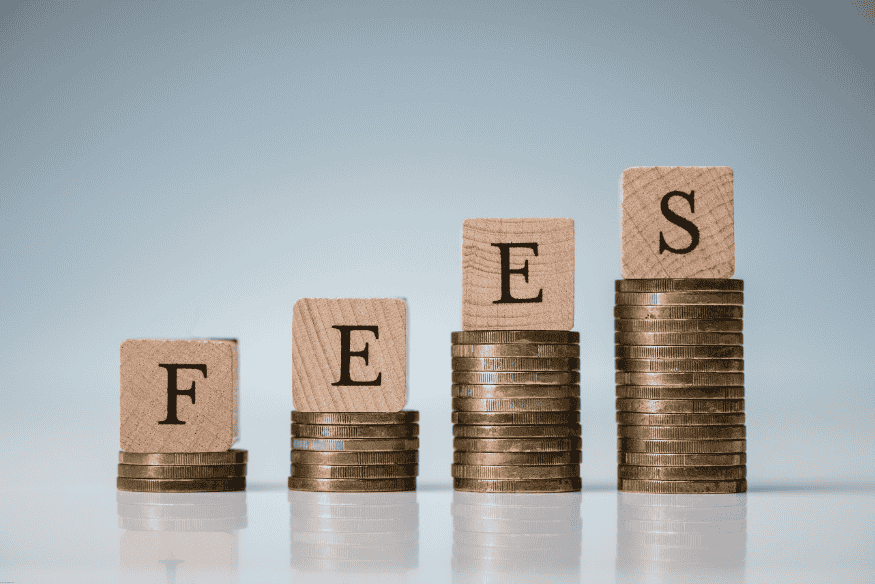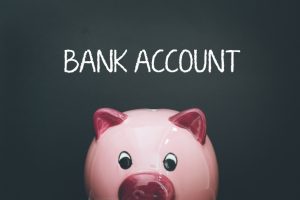You’ve probably used a credit card for everyday buys. But, it’s key to know about the various fees it comes with.
Recent data shows eight common fees you might see. These include annual fees, interest rates, and late payment penalties.
Knowing about these fees can help you save money. By understanding and avoiding them, you can get more from your financial tool. This way, you can cut down on costs and enjoy more benefits.
Key Takeaways
- Be aware of the different types of credit card charges.
- Understand how to avoid unnecessary expenses.
- Make informed decisions about your credit usage.
- Minimize costs by choosing the right card for your needs.
- Maximize your benefits by understanding the terms and conditions.
The Hidden Costs Behind Your Credit Card
Credit cards seem convenient, but they come with hidden charges. These can hurt your financial health. Some fees are obvious, but others sneak up on you.
Credit card companies make money from various fees. They charge interest, late fees, and interchange fees. These fees add up quickly.
The Business Model of Credit Card Companies
Credit card companies make most of their money from interest charges on what you owe. They also get interchange fees from merchants for each transaction. Late fees and penalties add to their income.
Recent data shows that fees are a big part of their income. This shows how important it is to know about these fees.
How Fees Affect Your Financial Health
Fees can seriously harm your financial health. High interest rates and surprise charges can trap you in debt. Knowing about these costs helps you use your credit card wisely.
By understanding fees and watching your spending, you can avoid financial trouble. This way, you can use your credit card without it causing stress.
Types of Credit Card Fees You Should Know

As a credit card user, you’ll face various fees that can affect your finances. These fees include annual fees, interest charges, and late payment fees. It’s key to understand these to manage your card well.
Primary Fee Categories
Credit card fees fall into a few main types. Annual fees are paid once a year to keep your account open. Interest charges kick in if you don’t clear your balance each month. Late payment fees happen if you miss a payment. Knowing these can help you dodge extra costs.
How Fees Vary Between Card Issuers
Card issuers set their own fees for services. Some cards have no annual fees, while others charge a lot. Interest rates and late fees also differ a lot. By comparing these, you can pick a card that fits your spending and budget.
Annual Fees: Are They Worth It?
Annual fees can be a turn-off, but some credit cards make them worth it. It’s key to compare cards with fees to those without. This helps you decide what’s best for you.
Comparing Fee vs. No-Fee Cards
Cards with no annual fees are great for light users. But, cards with fees often have better rewards and perks. For example, a $95 fee card might give 3% cashback on groceries, while a no-fee card might only offer 1%.
It’s all about whether the benefits are worth the cost. Think about how much you’ll use the card and what perks you need.
When Premium Cards Justify Their Cost
Premium cards, with fees over $500, offer top-notch benefits. These include personal travel assistants, exclusive events, and high-end insurance. For those who travel a lot, these perks are priceless.
To see if a premium card is worth it, think about your travel habits and what benefits matter most to you.
Reward Calculations for Finnish Cardholders
Finnish cardholders should figure out their potential rewards based on their spending. For example, if you spend €1,000 a month on a 2% cashback card, you’ll earn €240 a year. If the card’s fee is €100, you’ll still save €140.
Break-Even Analysis for Annual Fees
A break-even analysis shows how much you need to spend or earn to make the fee worthwhile. Let’s say a card has a €200 fee and offers €50 in travel credits and 1.5% cashback. You’d need to earn at least €150 in cashback (€200 fee – €50 travel credit) to break even.
Interest Charges and APR Explained
It’s key to know about interest charges and APR to handle your credit card well. If you don’t pay off your credit card balance fully, you’ll face interest on what’s left. This can make your debt grow a lot over time.
How Credit Card Interest Is Calculated
Credit card interest is figured out by your average daily balance and the APR of your card. The APR is the yearly rate of interest on your balance. To find the interest, the issuer multiplies your daily balance by the daily rate (APR divided by 365) and the billing cycle days.
Several things can affect your credit card interest:
- The type of credit card you have
- Your credit score and history
- The prime rate set by the central bank
Grace Periods and How to Use Them
A grace period is the time between your billing cycle end and the payment due date. During this time, you can pay your balance without interest. To make the most of the grace period, pay your balance in full before the due date. This can help you avoid interest charges.
For example, if your billing cycle ends on the 15th of the month and your payment is due on the 10th of the next month, you have about 25 days to pay without interest.
Finnish Interest Rate Regulations
In Finland, there are rules to protect consumers from high interest rates. The law requires credit card issuers to clearly show the terms and conditions, like the APR and fees.
Comparing APRs Across Finnish Banks
APRs can differ a lot between Finnish credit card issuers. It’s important to compare APRs and terms from different banks to find the best deal. Some banks might offer lower APRs or special 0% APR deals.
When comparing APRs, keep these tips in mind:
- Look for cards with lower APRs or special offers
- Check for any extra fees, like annual or late fees
- Know the terms and conditions, including any rate changes
Late Payment Penalties and Their Impact

It’s important to know how late payment penalties work. Missing a payment can lead to immediate fees and harm your credit score over time.
Fee Structures for Missed Payments
Late payment fees vary by card issuer and your payment history. They usually range from $25 to $40. For example, a few days late might cost you $25, but repeated misses could increase the fee.
| Card Issuer | First Late Payment Fee | Repeated Late Payment Fee |
|---|---|---|
| Issuer A | $25 | $35 |
| Issuer B | $30 | $40 |
Long-Term Effects on Your Credit Profile
Missed payments lead to immediate fees and long-term credit score damage. A single missed payment can drop your score by up to 100 points. This can make it harder to get loans or credit at good rates.
Maintaining a good credit profile is key to financial health. Avoiding late payments is crucial.
Foreign Transaction Fees for Finnish Travelers
Foreign transaction fees can really add up, making it key to pick the right credit card. When you travel abroad, you face charges not just for the purchase but also extra fees. These fees can be between 1% to 3% of what you buy.
Currency Conversion Costs
Converting your money to another currency costs more than just the exchange rate. Some credit cards offer good exchange rates, but the real cost is in the extra fees. For example, a 2% fee on a €100 purchase means you pay an extra €2. This can add up fast with many purchases.
Best Finnish Cards for International Use
But, some Finnish credit cards are made for international travel, with no foreign transaction fees or low rates. Cards like the Nordea Platinum Card and the OP Bonus Visa Card are favorites among Finnish travelers. They offer great deals for international use. Always choose a card that says it has no foreign transaction fees to save money on your purchases abroad.
Understanding Credit Card Fees in Finland
In Finland, knowing about credit card fees is key to smart money choices. The local market follows both Finnish rules and EU standards.
Unique Aspects of Finnish Credit Card Market
The Finnish credit card scene is known for strong consumer protection and clear fee details. Card issuers must show all fees clearly, helping you pick the right card for you.
Consumer Protection Laws in Finland
Finland’s laws protect consumers from unfair credit card fees. These rules make sure fees are fair and easy to understand.
EU Regulations That Benefit Finnish Cardholders
EU rules, like the Cap on Interchange Fees, help Finnish card users save money. These rules make the market more competitive and friendly to consumers.
Comparison with Other Nordic Countries
Finland’s credit card market shares similarities with other Nordic countries in consumer protection. Yet, fee structures and card issuer policies differ, showing each country’s financial uniqueness.
Knowing these differences helps you choose the best credit card for your needs.
Cash Advance and Balance Transfer Fees
Before you get a cash advance or balance transfer, know the fees. These services are handy but can cost a lot. They can hurt your wallet.
The Hidden Costs of Cash Advances
Cash advances are pricey, with fees from 3% to 5% of the amount. For example, a $500 advance might cost $15 to $25. Plus, interest starts right away, and rates are often higher than regular purchases.
This makes credit card cash advances a costly choice.
Evaluating Balance Transfer Offers
Balance transfers can help with debt or lower interest rates. But, they have fees too. Fees are usually 3% to 5% of the amount moved. A $2,000 transfer might cost $60 to $100.
It’s key to see if the lower rate saves enough to cover the fee.
When looking at balance transfers, find cards with 0% intro APRs. Check how long this rate lasts. Also, know the regular APR that kicks in later. This way, you make a choice that fits your financial plans.
How to Read Your Credit Card Fee Disclosure
Credit card fee disclosures can be complex, but knowing how to read them can save you money. When you get your credit card agreement, it’s full of information that can be hard to understand. But, taking the time to understand the terms and conditions can help you avoid unexpected fees and charges.
Decoding the Fine Print
The fine print in your credit card agreement has important information about fees, interest rates, and other charges. To decode it, look for sections that outline the different types of fees, such as annual fees, late payment fees, and foreign transaction fees. Also, check for any promotional or introductory offers that may have specific conditions.
When reviewing the fine print, pay attention to the language used. Look for keywords like “fee,” “charge,” “interest rate,” and “APR.” Understanding these terms will help you grasp the total cost of using your credit card.
Red Flags to Watch For in Terms and Conditions
As you review your credit card agreement, be on the lookout for red flags that could indicate potential issues. Some common red flags include high interest rates, excessive fees, or complex terms that are difficult to understand. If you notice any of these warning signs, it may be worth reconsidering your credit card choice or negotiating with your card issuer.
Additionally, check for any clauses that allow the issuer to change the terms and conditions without notice. Being aware of these potential pitfalls can help you make informed decisions about your credit card usage.
Strategies to Avoid and Reduce Credit Card Fees

Learning how to manage credit card fees can save you a lot of money. By using a few simple strategies, you can cut down on the cost of credit card fees. This way, you can enjoy more of your card’s benefits without breaking the bank.
Setting Up Payment Systems and Alerts
Setting up automatic payments is a smart move to avoid late fees. Link your credit card to your bank account to make sure payments are on time. Also, setting up alerts can remind you of payment due dates, helping you stay on track and avoid missed payments.
Negotiating with Your Card Issuer
If you’re dealing with high fees or unfair charges, try negotiating with your card issuer. Recent data shows many issuers are open to waiving or reducing fees for loyal customers. Don’t be shy to call your issuer and talk about your options. You might be surprised at what they’re willing to offer.
When to Consider Switching Cards
If your current card has fees that can’t be negotiated, it might be time to look for a new one. Look for cards with lower or no annual fees and better rewards. Switching cards could save you money and improve your financial health.
Conclusion: Taking Control of Your Credit Card Costs
Understanding credit card fees is key to controlling your costs. By managing your credit card well, you can avoid extra expenses. This helps you make smart choices about your money.
Credit cards come with fees like annual charges, interest, and late fees. These can add up quickly. To cut costs, set up automatic payments, talk to your issuer, or look into balance transfers. The Money Advice and Budgeting Service offers tips on how to do this.
To manage your credit card better, be aware of your spending. Make changes if you need to. This way, you can reduce fees and handle your credit card more effectively.









